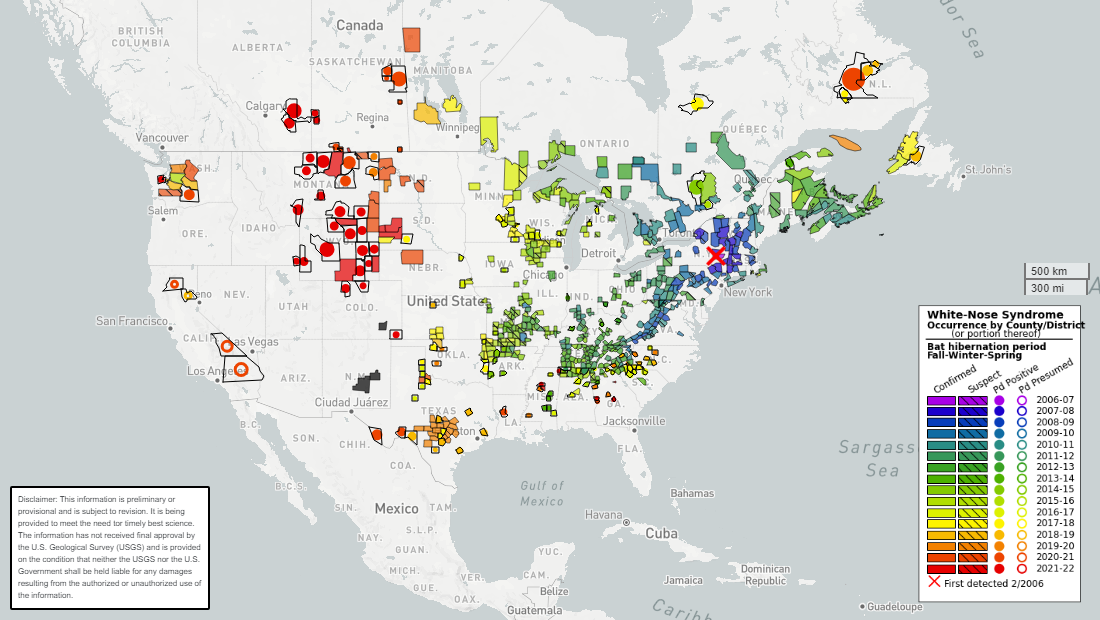Overview
White-nose syndrome (WNS) is the name used to describe a group of symptoms associated with the deaths of millions of bats in the USA (40 states) and Canada (eight provinces), according to figures from the US Fish and Wildlife Service. In some hibernation sites numbers have declined by 80-100% since 2006, when the condition was first identified.
The video Battle For Bats: Surviving White Nose Syndrome shows what is being done in the United States to mitigate the effects of WNS on bat populations.
Current situation in North America
The map below shows the distribution of white-nose syndrome in North America as at June 2023.

WNS Spreadmap from www.whitenosesyndrome.org
